NVIDIA Launches RTX 5090 D V2 in China: Gaming Performance Maintained, AI Capabilities Reduced
5 Sources
5 Sources
[1]
Nvidia RTX 5090D V2 limits AI performance even more with 25% less VRAM and bandwidth -- downgraded gaming flagship keeps same $2299 MSRP in China
Nvidia has discreetly introduced the GeForce RTX 5090D V2 to compete against the best graphics cards in China. The latest Blackwell-based gaming graphics card is a downgrade of the original GeForce RTX 5090D, featuring a 25% reduction in memory capacity and bandwidth to comply with the U.S. export restrictions to China. The difference between the GeForce RTX 5090 and the GeForce RTX 5090D was relatively marginal. Both graphics cards possess identical specifications; however, Nvidia imposed a minor restriction on the AI performance of the GeForce RTX 5090D, which allowed for its export to China at the time. The GeForce RTX 5090's 680 fifth-generation Tensor Cores provide up to 3,352 AI TOPS of performance, whereas the GeForce RTX 5090D offers only 2,375 AI TOPS, representing a 29% reduction compared to its vanilla counterpart. The latest GeForce RTX 5090D V2 has undergone a more radical transformation. Nvidia has made substantial changes to the graphics card's memory subsystem, reducing both capacity and bandwidth. The GeForce RTX 5090D V2 still employs GDDR7 memory chips operating at 28 Gbps, but has fewer of them, as Nvidia has seemingly disabled some memory channels. The GeForce RTX 5090D V2 has 24GB of memory, 25% less than the GeForce RTX 5090 or GeForce RTX 5090D. Logically, the memory interface is also affected. It has been reduced from the original 512-bit design to a 384-bit one, resulting in the GeForce RTX 5090D V2 offering 25% lower memory bandwidth. A regular GeForce RTX 5090 or GeForce RTX 5090D has 16 memory channels, allowing those cards to tap into 16 2GB GDDR7 memory chips for a total of 32GB. The GeForce RTX 5090D V2 has four disabled memory channels, meaning it's only connected to 12 memory chips. So, if you were to dissect the China-exclusive graphics card, there would be four empty pads with missing memory chips. A complete GB202 chip includes 128MB of L2 cache. Consumer graphics cards such as the GeForce RTX 5090 and GeForce RTX 5090D already do not utilize the entire silicon; hence, the consistent 96MB L2 cache has remained consistent across both SKUs. However, Nvidia has not disclosed any information regarding the L2 cache of the GeForce RTX 5090D, so it remains uncertain whether it has been modified. The reduction in memory bandwidth could negatively impact the RTX 5090D V2's gaming performance, but the loss of both capacity and bandwidth is especially bad news for AI, which is the primary use case scenario for these graphics cards in China. It's the same reason why the watered-down GeForce RTX 5090D existed in the first place. What is particularly frustrating for the Chinese market is that Nvidia is selling the GeForce RTX 5090D V2 at the exact $2,299 MSRP as the previous GeForce RTX 5090D. Consumers are consequently paying the same amount for a product that has 25% less memory capacity and bandwidth. Furthermore, since the concept of MSRP has become largely irrelevant in today's market, consumers will end up paying even more for even less.
[2]
GeForce RTX 5090 D v2 Officially Released - Specs, Performance, and Pricing
NVIDIA has rolled out the GeForce RTX 5090 D v2, a slightly modified version of the RTX 5090 D that keeps gaming performance largely intact but makes noticeable cuts to its memory configuration. This update isn't about boosting speed -- it's about shaving down the specs in certain areas while leaving the price exactly the same. At its core, the RTX 5090 D v2 still uses the GB202-240 GPU. It packs 21,760 CUDA cores for general processing, 170 RT cores for ray tracing, and 680 Tensor cores for AI and deep learning workloads. The boost clock holds steady at 2.41 GHz, so raw compute capability for gaming hasn't really changed. If you're only interested in frame rates, this is good news -- the numbers show just a 1-2% performance difference on average compared to the original model. The main changes are in memory. NVIDIA has scaled the memory interface down from 512-bit to 384-bit, and VRAM drops from 32 GB to 24 GB. That's a pretty big reduction in capacity and bus width, which also brings memory bandwidth down from 1,790 GB/s to 1,340 GB/s. For games, this doesn't seem to matter much; most titles are still running at the same performance levels as the previous version. But for workloads that rely heavily on memory bandwidth -- especially certain AI models and professional compute tasks -- the drop can be more severe. AI compute power is also lower. The v2 model is rated for 2,375 TOPS, compared to 3,352 TOPS on the original RTX 5090. For many AI applications, this translates to an 8-10% performance loss. In some extreme cases where the workload is heavily bandwidth-bound, users have seen slowdowns of more than 20%. That makes the card less appealing to anyone using it for large-scale machine learning training or other intensive compute scenarios. What's frustrating for many potential buyers is that the price hasn't changed. Despite having less VRAM and reduced bandwidth, the RTX 5090 D v2 still has the same MSRP of 16,499 RMB, which is roughly $2,087. That's the same cost as the original higher-memory version. Gamers who just want the highest frame rates might not mind, since performance in that area is basically unchanged. But content creators, data scientists, and AI researchers could see the reduced memory and bandwidth as a significant drawback -- especially since there's no cost savings to offset the downgrade. So who's this card really for? If you're a gamer looking for top-tier performance and availability of the original RTX 5090 D is limited, the v2 offers almost the same gaming experience. But if you need the extra memory capacity and bandwidth for professional or AI workloads, this version could feel like you're paying full price for less capability. NVIDIA's decision to keep the price the same despite the hardware changes will likely spark some debate in the enthusiast community. Bottom line: the RTX 5090 D v2 is essentially the same powerhouse for gaming but a weaker option for AI and professional use, with no discount to sweeten the deal. For some buyers, that's fine -- for others, it's a deal breaker.
[3]
NVIDIA launches RTX 5090 D V2 in China for 16,499 yuan, up to $1400 cheaper than the RTX 5090
TL;DR: NVIDIA launched the GeForce RTX 5090 D V2 in China with 24GB GDDR7 VRAM, reduced from 32GB to comply with US export restrictions. It retains key RTX features, 21,760 CUDA cores, and a 575W TDP, priced similarly to the RTX 5090 D but offers significant savings with slightly lower memory bandwidth. NVIDIA's new GeForce RTX 5090 D V2 with a tweaked design and just 24GB of GDDR7 (regular RTX 5090 packs 32GB) has arrived to the shores of China, priced at the same price as the RTX 5090 D. The new RTX 5090 D V2 is mostly unchanged for the most part across the board from the RTX 5090 D non-V2 variant, but the new RTX 5090 D V2 has a radically changed VRAM capacity of 24GB GDDR7 compared to 32GB on the RTX 5090 D and RTX 5090 graphics cards. The tweaks are for NVIDIA to meet US export restrictions to China, hence the new memory configuration. NVIDIA's official website now lists the RTX 5090 D V2 and all of its GPU specifications, with the GB202-240 die and its 21,760 CUDA cores, 4th Gen Ray Tracing Cores, 5th Gen Tensor Cores, with 2375 AI TOPs of performance. This is compared to the RTX 5090 with 3352 AI TOPs. The RTX 5090 ships with the full 32GB of GDDR7 memory on a 512-bit memory bus capable of 1792GB/sec of memory bandwidth, while the new RTX 5090 D V2 ships with 24GB of GDDR7 on a smaller 384-bit memory bus, with a slower 1344GB/sec memory bandwidth. This complies with US export rules that bans any card over 1.4GBSec of memory bandwidth. The new RTX 5090 D V2 has the same GPU clocks with a base 2.01GHz and boost of 2.41GHz, with AIBs free to release custom RTX 5090 D V2 graphics card at those frequencies, or tweak them with OC editions and beefier cards. The new RTX 5090 D V2 keeps its 575W TDP so it's not restricted with power, and retains all of NVIDIA's RTX technologies like the RTX 5090 and RTX 5090 D, just without as much, or as fast memory. The official MSRP for the GeForce RTX 5090 D V2 is 16,499 yuan which works out to around $2295, which is the same launch price as the RTX 5090 D, but the card (like all high-end GPU releases) can't be found at MSRP because of huge demand. There are some reports that the new RTX 5090 D V2 is available at MSRP at multiple retailers in China. Hong Kong retailer Faroll lists a few different RTX 5090 D V2 graphics cards, which are listed for 16,499 and 16,999 yuan, which converts to around $2200 USD, with custom GIGABYTE and Inno3D solutions. The GIGABYTE RTX 5090 GAMING OC with 32GB GDDR7 costs 22,499 yuan, with prices ranging up to 25,999 yuan for an MSI RTX 5090 VENTUS 3X OC. The cheapest full RTX 5090 costs $2867 or so USD in China, while the cheapest RTX 5090 D V2 costs around $2100, a savings of $850+ USD for gimped VRAM. In gaming, you wouldn't notice the difference unless you were flooding the VRAM as much as possible and needed more than 24GB, but that applies to very few.
[4]
NVIDIA RTX 5090 D V2 Launched Officially At 16,499 Yuan; Gets Listed On Hong Kong Retailer For Cheaper Than MSRP
The new variant for the RTX 5090 has been launched in mainland China at the same price as its original variant, but now with slower memory. NVIDIA officially launched the new variant of the GeForce RTX 5090 in mainland China today, replacing the older RTX 5090 D. The new variant, called GeForce RTX 5090 D V2, was unveiled a week ago, and today it hits the shelves in China as a new flagship RTX 50 gaming card. The GPU was nerfed in order to meet US export policies, and while it brings a lot of identical specifications to the RTX 5090 D, it has a weaker memory configuration. NVIDIA's official website lists the GPU's specifications, retaining the same but slightly cut-down GB202-240 die. It brings 21,760 CUDA cores and features 4th Gen Ray Tracing and 5th Gen Tensor cores, but the cut-down specs will now result in 2375 AI TOPS of performance compared to 3352 AI TOPS on the full-fledged RTX 5090. The new memory configuration drops from 32 GB GDDR7, 512-bit to 24 GB GDDR7, 384-bit, resulting in a reduction of memory bandwidth from 1792 GB/s to 1344 GB/s, complying with US export rules that ban over 1.4 GB/s of memory bandwidth. The core frequencies remain the same, bringing a base clock of 2.01 GHz and a boost clock of 2.41 GHz for the reference edition. However, there won't be any Founders Edition for the RTX 5090 D V2 and AIBs will decide to keep the stock clocks or increase them on their OC editions. The RTX 5090 D V2 will support all the latest technologies as the RTX 5090 and RTX 5090 D, and keeps the 575W of TDP. The official MSRP listed is 16,499 Yuan, which roughly translates to US$2,295. This was the launch price for the RTX 5090 D as well, but the card was hardly available at its MSRP due to high demand. However, according to some reports, the new card is said to be available at the MSRP on many retailers. The GPU was also listed on a Hong Kong retailer called Faroll (via @unikoshardware), which listed a few editions, starting at 16,499 Hong Kong dollars. It is roughly equal to 15,108 Chinese Yuan, making it around US$200 cheaper than in mainland China. Since RTX 5090 isn't officially banned in Hong Kong, but has a much higher price than usual, the RTX 5090 D V2 can be anywhere from $700-$1400 cheaper than the latter. Considering both offer equivalent gaming performance as seen in the latest review, the RTX 5090 D V2 can be a good alternative for a cheaper price, but the RTX 5090 and RTX 5090 D still have a good edge in productivity and AI performance.
[5]
China-Exclusive RTX 5090 D V2 Benchmarks Reveal 2% Slower Gaming Performance Than RTX 5090 D, And A Sharp Decline In Productivity And AI Prowess
The new NVIDIA RTX 5090 variant just hit the shelves in China, and as per the latest benchmarks, it's as powerful as the RTX 5090 D but only in gaming and synthetic tests. The latest benchmarks published by Expreview confirm that the new memory configuration on the newly launched GeForce RTX 5090 D V2 isn't limiting the GPU in gaming. This was obvious from the very start since 24 GB memory capacity is more than sufficient for modern titles, even at 4K, as a number of specifications are retained on the new card. Still, there must be applications where the lower VRAM capacity would impact the overall performance. The review confirms that the RTX 5090 D V2 indeed impacts the performance negatively in a bunch of productivity and AI tests. As far as gaming and synthetic tests are concerned, there is hardly a 1-2% performance difference between the two. The RTX 5090 D V2 can be slightly slower in some instances, but overall, you should expect the same performance as the previous RTX 5090 D variant. At 4K native resolutions, multiple games confirmed almost no performance regressions, which is good news for gamers, but the 8 GB reduced VRAM capacity is impacting the productivity performance greatly. While synthetic benchmarks reveal similar performance to the RTX 5090 D, including the popular 3DMark tests like Fire Strike, Time Spy, Port Royal, Speed Way, and Steel Nomad, in productivity applications such as Blender and V-Ray, things don't look good at all. In Blender, a performance gap of as high as 19% was seen in Junkshop, while the Monster and Classroom scenes showed a 10.5% and 15.9% performance gap, putting the RTX 5090 D V2 significantly behind the RTX 5090 D variant. In V-Ray Benchmark, the rendering performance of RTX 5090 D V2 came out roughly 7.5% slower than RTX 5090 D in CUDA, and around 20% slower (or a 24.8% difference) in the RTX benchmark. This is quite a downgrade while the RTX 5090 D V2 was seen listing for nearly the same price as the RTX 5090 D. However, the official price is roughly $500-$550 lower than the latter when we compare the actual market prices of both (since RTX 5090 D was available for much higher than its MSRP). In AI tests, such performance drops were seen across multiple tests, including various UL Procyon AI tests, particularly the LLAMA 3.1 and LLAMA 2, which show as much as a 10% performance difference. All these performance drops point to the lower VRAM capacity on the RTX 5090 D V2, making it unappealing for AI workloads. The RTX 5090 D already came with nerfed AI capabilities, and now with reduced VRAM capacity, this is more obvious. Perhaps, the RTX 5090 D V2 might serve pretty much well for gaming needs, but for productivity and AI, it just can't compete with the previous variant. However, if users can find it for its official MSRP of 16,499 Yuan (roughly US$2295, the same as the launch price of RTX 5090 D), it's still a decent alternative.
Share
Share
Copy Link
NVIDIA introduces the GeForce RTX 5090 D V2 in China, featuring reduced memory and AI performance to comply with US export restrictions while maintaining gaming capabilities.
NVIDIA Introduces RTX 5090 D V2 for Chinese Market
NVIDIA has quietly launched the GeForce RTX 5090 D V2, a modified version of its high-end graphics card specifically designed for the Chinese market. This new variant comes with significant changes to its memory subsystem and AI capabilities, while maintaining gaming performance comparable to its predecessors
1
.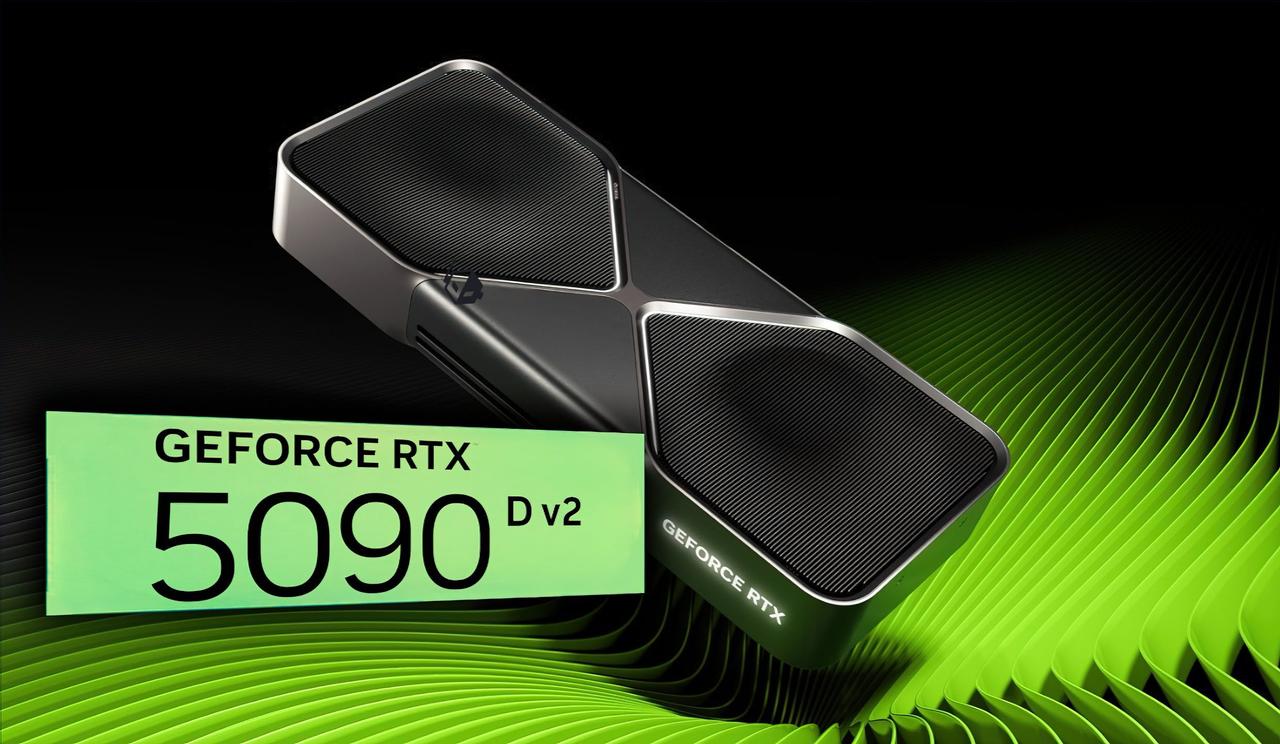
Source: Wccftech
Key Specifications and Changes
The RTX 5090 D V2 retains the GB202-240 GPU with 21,760 CUDA cores, 170 RT cores, and 680 Tensor cores. The boost clock remains at 2.41 GHz, ensuring that raw compute capability for gaming is largely unchanged
2
.However, significant modifications have been made to the memory configuration:
- VRAM capacity reduced from 32GB to 24GB
- Memory interface narrowed from 512-bit to 384-bit
- Memory bandwidth decreased from 1,790 GB/s to 1,340 GB/s
These changes were implemented to comply with US export restrictions to China, which limit memory bandwidth to 1.4 GB/s
3
.Performance Impact
Gaming performance remains largely unaffected, with benchmarks showing only a 1-2% difference compared to the original RTX 5090 D
5
. However, the impact on AI and productivity workloads is more significant:- AI compute power reduced from 3,352 TOPS to 2,375 TOPS
- Up to 20% performance loss in memory-intensive AI workloads
- Productivity applications like Blender show performance gaps of up to 19%
- V-Ray Benchmark reveals 7.5% slower CUDA performance and 20% slower RTX performance
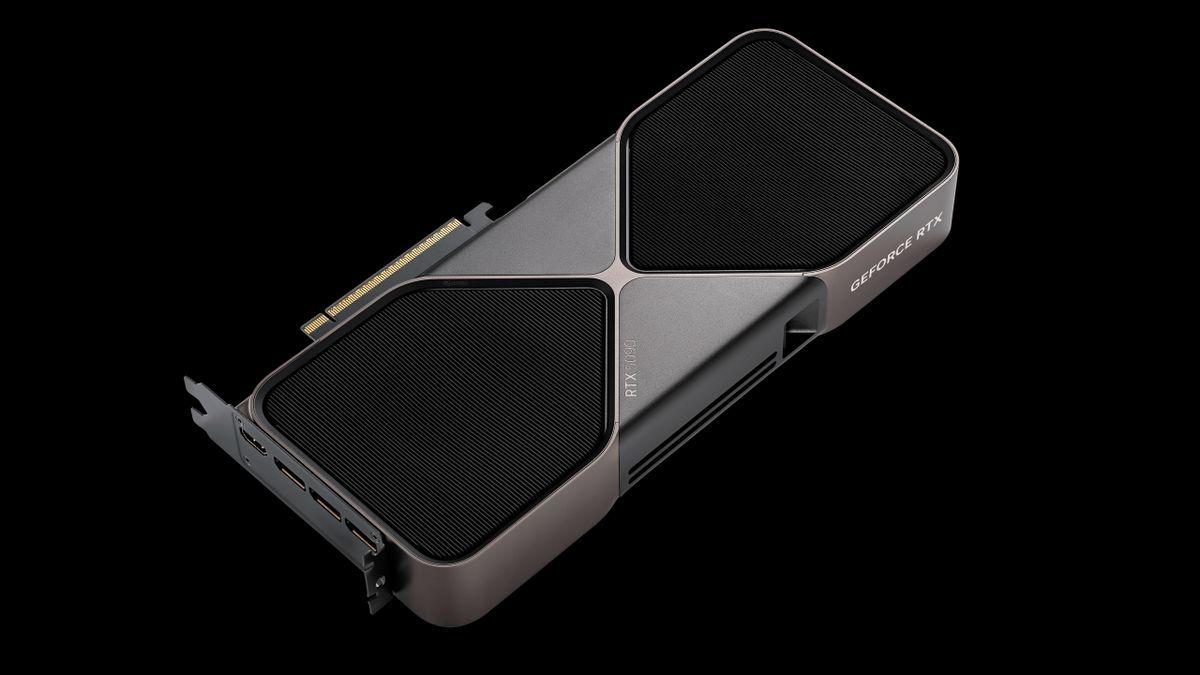
Source: Tom's Hardware
Related Stories
Pricing and Availability
The RTX 5090 D V2 is priced at 16,499 yuan (approximately $2,295 USD), matching the MSRP of the original RTX 5090 D
4
. This pricing strategy has raised concerns among consumers and industry analysts, as the new card offers reduced capabilities at the same price point.In Hong Kong, the card is listed for slightly less, potentially offering savings of $700-$1400 compared to the full RTX 5090
4
.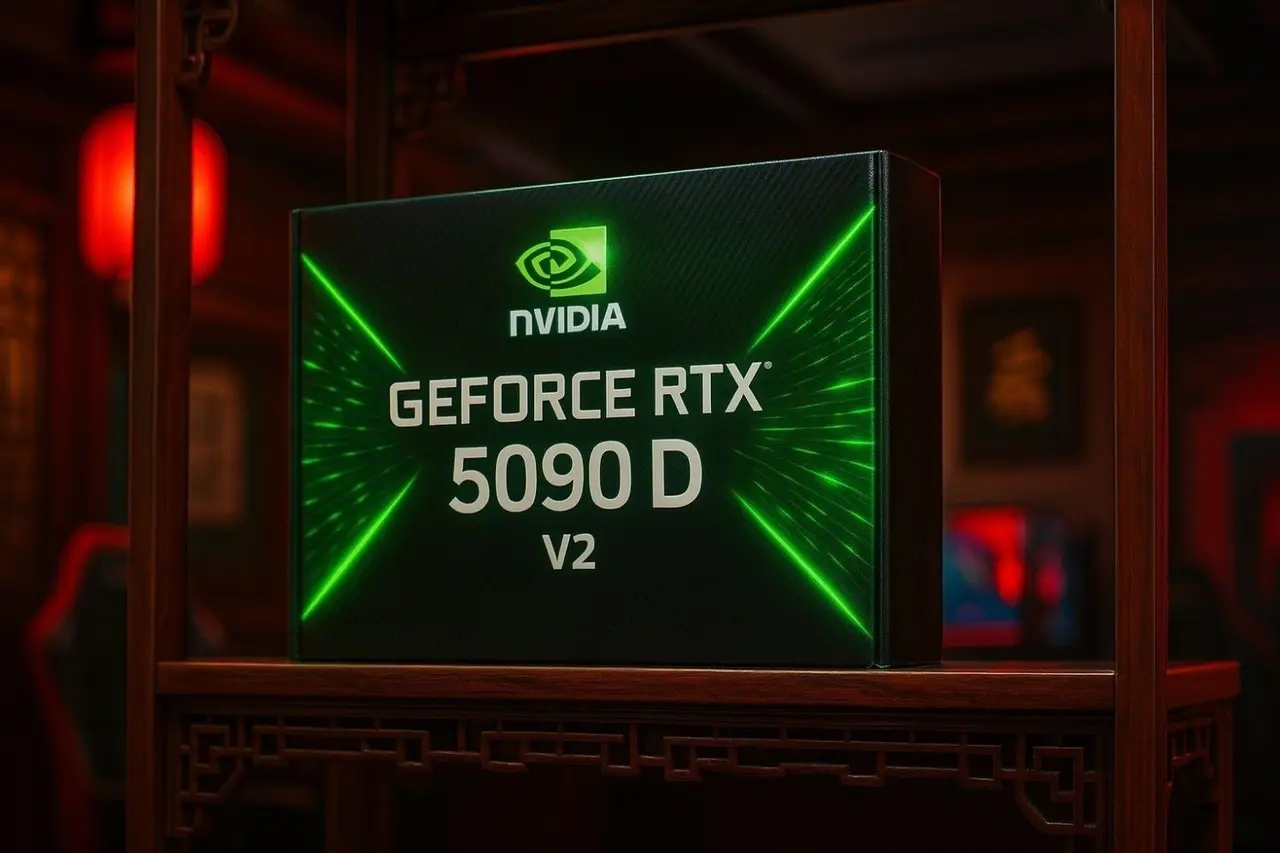
Source: TweakTown
Market Implications
The introduction of the RTX 5090 D V2 highlights the ongoing challenges faced by technology companies in navigating international trade restrictions. While NVIDIA has managed to maintain gaming performance, the reduced AI and productivity capabilities may impact the card's appeal to professionals and researchers in the Chinese market.
For gamers focused solely on frame rates, the RTX 5090 D V2 remains a powerful option. However, content creators, data scientists, and AI researchers may find the reduced memory and bandwidth a significant drawback, especially given the unchanged price point
2
.As the global semiconductor industry continues to navigate complex geopolitical landscapes, products like the RTX 5090 D V2 demonstrate the delicate balance companies must strike between technological advancement, market demands, and regulatory compliance.
References
Summarized by
Navi
[1]
[3]
Related Stories
NVIDIA's GeForce RTX 5090 D V2: A New China-Specific GPU Launching in August
03 Jul 2025•Technology
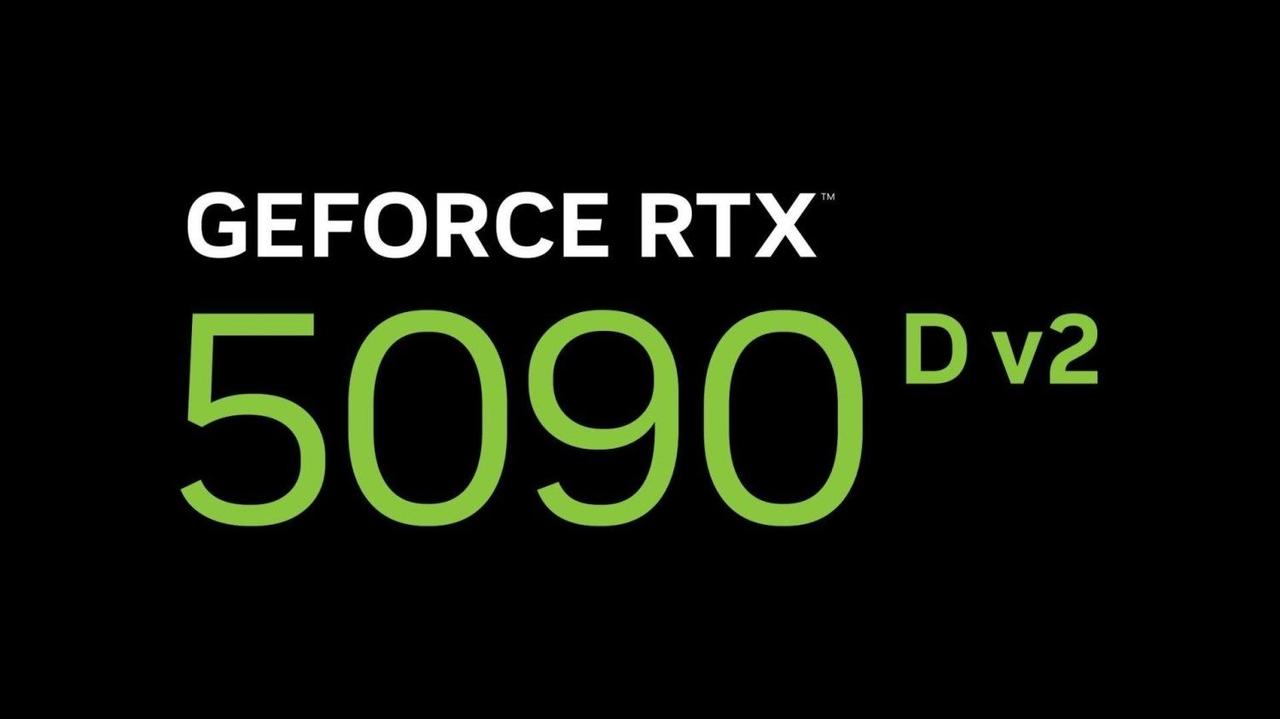
NVIDIA Develops RTX 5090 DD: A New GPU Variant for China Amid Export Restrictions
19 Jun 2025•Technology
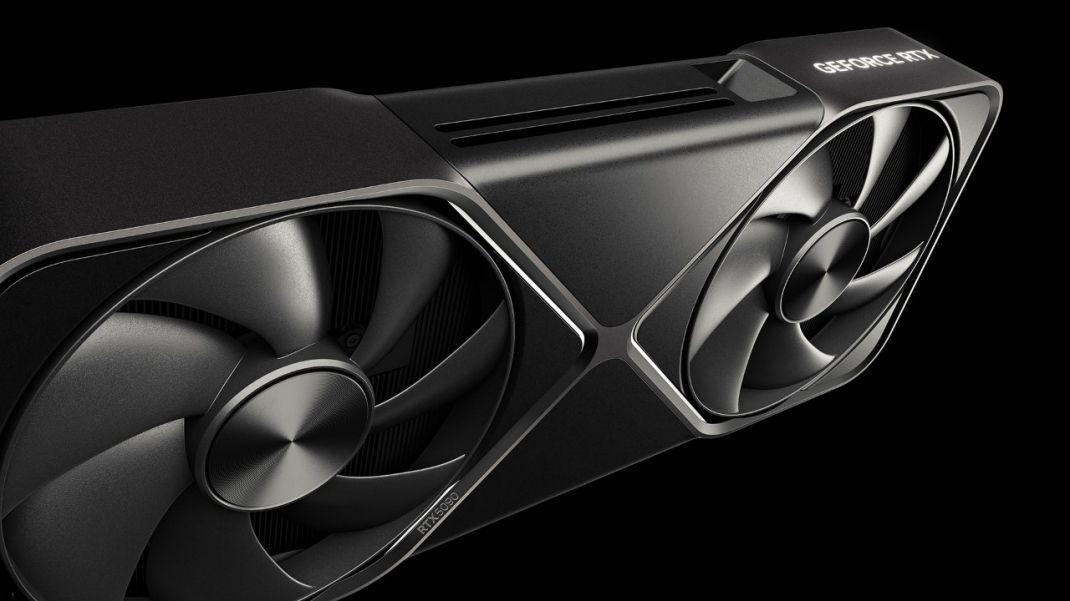
NVIDIA's RTX 5090D for China: AI and Crypto-Mining Restrictions Spark Controversy
17 Jan 2025•Technology

Recent Highlights
1
Google launches Gemini 3 Flash as default AI model, delivering speed with Pro-grade reasoning
Technology

2
OpenAI launches GPT Image 1.5 as AI image generator war with Google intensifies
Technology

3
OpenAI launches ChatGPT app store, opening doors for third-party developers to build AI-powered apps
Technology





